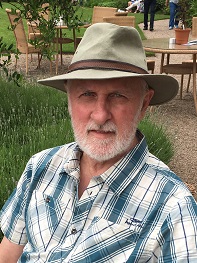About Us » What is Education?
GOOD EDUCATION WILL CHANGE YOU FOR LIFE
 Anyone can learn something long enough to pass an exam, then forget it afterwards. That is not really education though.
Anyone can learn something long enough to pass an exam, then forget it afterwards. That is not really education though.
Real education changes you for life. It makes you more capable, and that should vastly improve your opportunities and successes throughout your entire life.
Quote from John Mason (2016)
"Effective education increases knowledge, which leads to increased understanding, which in turn leads to increased awareness. As a result a person has a greater permanent capacity to do things"
Long Term or Short Term Learning?
The brain has the ability to store information temporarily (in short term memory); or permanently (in long term memory.
- Learning into short term memory has a use by date and isn't really effective education
- Learning into long term memory is what really useful education is all about
We Design our Courses for the Long Term
Some colleges may take short cuts, teaching you enough to pass exams, but fall short of really effective education because they don't provide a learning experience that embeds in long term memory. Courses that are shorter in duration, but cover the same scope of information will do that. If you want really effective education, there are no short cuts. It takes time to learn properly!
Three Parts to Memory
There are three parts to memory:
1. sensory or iconic memory (SM - which is really a registering of information before we have a chance to think about it)
2. short term memory (STM - where information that we attend to is briefly stored - for a few seconds)
3. long term memory (LTM - which stores information that has been consciously or unconsciously reinforced for much longer periods, perhaps for our lifetime).
Memory is supposedly stored in a process that moves the information from part 1 to part 2 to part 3. The main factors in the transferral of information from sensory to short term memory are attention and time. Information that is not quickly transferred to the STM is lost. The SM can hold large amounts of information, and most of it is lost in this way because we have not attended to it quickly enough. (Actually, we could not attend to it all anyway, so we usually perceive only that which is relevant in some way to us at that time.)
Attentiveness to information registered in the SM can be voluntary or involuntary or automatic. Information is more likely to be registered if it is found meaningful (not necessarily to the teacher, but to the person doing the thinking). For instance, information may enter our STM if it evokes some emotion in us, or if we attach some significance or meaning to it (e.g. possible danger, possible benefit), or if we focus on that information for any period of time (e.g. a few seconds).
 To ensure that information is stored in STM, we must pay attention to it (tell ourselves that this is important, be interested or curious) and attend to it long enough for it to enter the STM. Teachers can help by:
To ensure that information is stored in STM, we must pay attention to it (tell ourselves that this is important, be interested or curious) and attend to it long enough for it to enter the STM. Teachers can help by:
- getting students' attention before presenting information (e.g. “This… will be on the test”),
- presenting information in more than one way (e.g. verbally and in images),
- changing their voice tone or volume at very important parts,
- alerting students beforehand to the important parts, identifying key words (perhaps on the board), and
- breaking large amounts into smaller bits and allowing these to be processed before moving on to the next parts (e.g. summarising a passage in one sentence).
Students can focus their attention on material being studied by:
- highlighting key words and phrases,
- visualising,
- making immediate sense of information (e.g. brain stem = survival ),
- and by summarising small sections of material to get the main points before moving onto the next sections.
Information in the STM that is consciously processed is more likely to be transferred to the long term memory. This processing can be emotional, intellectual, or active. For instance, if we feel strongly about the information, or relate it to what we know, or use language to name it, it is more likely to be stored in our LTM. Again, attention is a key factor. And again, too much information will result in loss of some of it.
Teachers should encourage students to attend to the information long enough for it to be transferred to LTM by:
- discussing it,
- giving real-life examples,
- asking for examples from students’ experience,
- asking for opinions on it etc.
They can also reinforce it using any of the means described earlier. Other key strategies include rehearsing (repeating key words and phrases), summarising, paraphrasing, and breaking it into manageable chunks. A very useful tool here is mapping. The teacher and students can create diagrams of processes or showing relationships, using colours, shapes, arrows etc. Students should be encouraged to make their own. Similar maps can be very helpful in relating new information to other information, or showing where it fits into the topic. If these diagrams or maps contain all key information, they provide visual as well as verbal cues for later recall. Other organising strategies work also e.g. using certain colours or shapes for particular information.